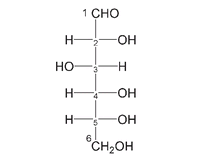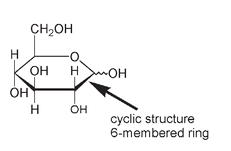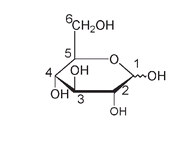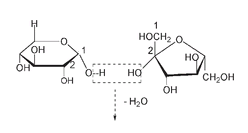Penny le Couteur & Jay Burreson (10 page)
Read Penny le Couteur & Jay Burreson Online
Authors: Napoleon's Buttons: How 17 Molecules Changed History
Tags: #Philosophy & Social Aspects, #Science, #General, #World, #Chemistry, #Popular Works, #History

It is impossible to establish the exact numbers of slaves that were loaded onto sailing vessels off the west coast of Africa and later sold in the New World. Records are incomplete and possibly fraudulent, reflecting attempts to get around the laws that belatedly tried to improve conditions aboard these transport ships by regulating the number of slaves that could be carried. As late as the 1820s more than five hundred human beings were being packed, on Brazilian slave ships, into an area less than nine hundred feet square and three feet high. Some historians calculate that upward of fifty million Africans were shipped to the Americas over the three and a half centuries of the slave trade. This figure does not include those who would have been killed in slaving raids, or those who died on the trip from the interior of the continent to the African coasts, or those who did not survive the horrors of the sea voyage that came to be known as the middle passage.
The middle passage refers to the second side of the trade triangle known as the Great Circuit. The first leg of this triangle was the trip from Europe to the coast of Africa, predominantly the west coast of Guinea, bringing manufactured goods to exchange for slaves. The third leg was the passage from the New World back to Europe. The slave ships by that point would have exchanged their human cargo for ore from mines and produce from the plantations, generally rum, cotton, and tobacco. Each leg of the triangle was hugely profitable, especially for Britain: by the end of the eighteenth century the value of British income derived from the West Indies was much greater than the value of income from trade with the rest of the world. Sugar and sugar products, in fact, were the source of the enormous increase in capital and the rapid economic expansion necessary to fuel the British and later the French Industrial Revolution of the late eighteenth and early nineteenth centuries.
SWEET CHEMISTRY
Glucose
Glucose is the most common of the simple sugars, which are sometimes called
monosaccharides
from the Latin word
saccharum
for sugar. The
mono
prefix refers to one unit, as opposed to the two-unit
disaccharides
or the many-unit
polysaccharides.
The structure of glucose can be drawn as a straight chain or as a slight adaptation of this chain, where each intersection of vertical and horizontal lines represents a carbon atom. A set of conventions that need not concern us give numbers to the carbon atoms, with carbon number 1 always drawn at the top. This is known as a Fischer projection formula, after Emil Fischer, a German chemist who in 1891 determined the actual structure of glucose and a number of other related sugars. Though the scientific tools and techniques available to Fischer at the time were very rudimentary, his results still stand today as one of the most elegant examples of chemical logic. He was awarded the 1902 Nobel Prize in chemistry for his work on sugars.

monosaccharides
from the Latin word
saccharum
for sugar. The
mono
prefix refers to one unit, as opposed to the two-unit
disaccharides
or the many-unit
polysaccharides.
The structure of glucose can be drawn as a straight chain or as a slight adaptation of this chain, where each intersection of vertical and horizontal lines represents a carbon atom. A set of conventions that need not concern us give numbers to the carbon atoms, with carbon number 1 always drawn at the top. This is known as a Fischer projection formula, after Emil Fischer, a German chemist who in 1891 determined the actual structure of glucose and a number of other related sugars. Though the scientific tools and techniques available to Fischer at the time were very rudimentary, his results still stand today as one of the most elegant examples of chemical logic. He was awarded the 1902 Nobel Prize in chemistry for his work on sugars.

Fischer projection formula for glucose, showing the numbering of the carbon chain
Although we can still draw sugars such as glucose in this straight chain form, we now know that they normally exist in a different formâcyclic (ring) structures. The drawings of these cyclic structures are known as Haworth formulas, after Norman Haworth, the British chemist whose 1937 Nobel Prize recognized his work on vitamin C and on structures of carbohydrates (see Chapter 2). The six-membered ring of glucose consists of five carbon atoms and one oxygen atom. Its Haworth formula, shown below, indicates by number how each carbon atom corresponds to the carbon atom shown in the previous Fischer projection formula.

Haworth formula of glucose, showing all the hydrogen atoms

Haworth formula of glucose, without all the H atoms but showing carbon atoms numbered
There are actually two versions of glucose in the cyclic form, depending on whether the OH at carbon number 1 is above or below the ring. This might seem a very minor distinction, but it is worth noting as it has very important consequences for the structures of more complicated molecules that contain glucose units, such as complex carbohydrates. If the OH at carbon number 1 is below the ring it is known as alpha (α)-glucose. If it is above the ring, it is beta (β)-glucose.

When we use the word
sugar,
we are referring to sucrose. Sucrose is a disaccharide, so called because it is composed of two simple monosaccharide units: one a glucose unit and the other a fructose unit. Fructose, or fruit sugar, has the same formula as glucose; C
6
H
12
O
6
, and also the same number and type of atoms (six carbon, twelve hydrogen, and six oxygen) found in glucose. But fructose has a different structure. Its atoms are arranged in a different order. The chemical definition of this is that fructose and glucose are
isomers.
Isomers are compounds that have the same chemical formula (same number of each atom) but different arrangements of these atoms.

sugar,
we are referring to sucrose. Sucrose is a disaccharide, so called because it is composed of two simple monosaccharide units: one a glucose unit and the other a fructose unit. Fructose, or fruit sugar, has the same formula as glucose; C
6
H
12
O
6
, and also the same number and type of atoms (six carbon, twelve hydrogen, and six oxygen) found in glucose. But fructose has a different structure. Its atoms are arranged in a different order. The chemical definition of this is that fructose and glucose are
isomers.
Isomers are compounds that have the same chemical formula (same number of each atom) but different arrangements of these atoms.

Fischer projection formulas of the isomers glucose and fructose, showing the different order of hydrogen and oxygen atoms at C#1 and C#2. Fructose has no H atoms at C#2.
Fructose exists mainly in the cyclic form, but it looks a bit different from glucose since fructose forms a five-membered ring, shown below as a Haworth formula, rather than the six-membered ring of glucose. As with glucose, there are α and β forms of fructose, but as it is carbon number 2 that joins the ring oxygen in fructose, it is around this carbon atom that we designate OH below the ring as α and OH above the ring as β.

Sucrose contains equal amounts of glucose and fructose but not as a mixture of two different molecules. In the sucrose molecule one glucose and one fructose are joined together through the removal of a molecule of water (H
2
O) between the OH at carbon number 1 of α-glucose and the OH on carbon number 2 of β-fructose.
2
O) between the OH at carbon number 1 of α-glucose and the OH on carbon number 2 of β-fructose.

Removal of a molecule of H
2
O between glucose and fructose forms sucrose. The fructose molecule has been turned 180° and inverted in these diagrams.
2
O between glucose and fructose forms sucrose. The fructose molecule has been turned 180° and inverted in these diagrams.
Other books
Black Halo by Sykes, Sam
Heat (Parker Reed Book 1) by J.M. Walker
The Curse of Arkady by Emily Drake
Confessions of a Bad Mother by Stephanie Calman
The Cloak Society by Jeramey Kraatz
Silver by Cairns, Scott
Forecast by Keith, Chris
The Dead Zone by Stephen King
Edge of Nowhere by Michael Ridpath